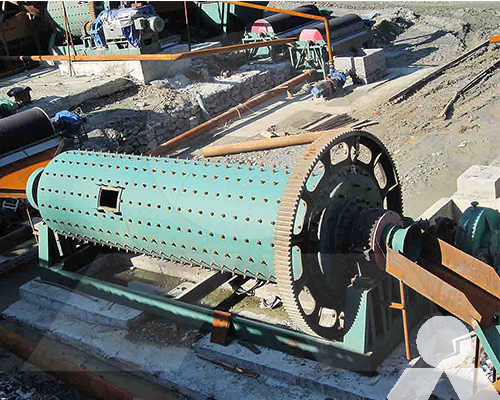Grinding Ball Mill Machine for Granite Powder
Grinding ball mill are used to grind a variety of materials, including granite. They are a versatile and efficient method of grinding materials into a fine powder.
The basic components of a grinding ball mill are as follows:
- Balls: The balls are the grinding media that are used to break down the material. The balls are typically made of steel or ceramic.
- Cylinder: The cylinder is the housing that contains the balls and the material. The cylinder is typically made of steel or concrete.
- Rotor: The rotor is the rotating shaft that turns the balls. The rotor is typically driven by a motor.
The operation of a grinding ball mill is as follows:
- The material is fed into the cylinder.
- The balls are rotated by the rotor.
- The balls impact the material, breaking it down into a fine powder.
- The ground material is discharged from the cylinder.
Grinding ball mills are available in a variety of sizes and capacities. The size of the mill is determined by the amount of material that needs to be ground. The capacity of the mill is determined by the amount of material that can be ground in a given period of time.

Grinding ball mills are used in a variety of applications, including:
- Mining: Grinding ball mills are used to grind ore into a fine powder. This powder is then used to extract the desired minerals from the ore.
- Construction: Grinding ball mills are used to grind aggregate into a fine powder. This powder is then used to make concrete and other building materials.
- Chemicals: Grinding ball mills are used to grind chemicals into a fine powder. This powder is then used to make a variety of products, including paints, plastics, and fertilizers.
Grinding ball mills are a versatile and efficient method of grinding materials into a fine powder. They are used in a variety of applications, including mining, construction, and chemicals.
Here are some of the advantages of using grinding ball mills:
- They are efficient at grinding materials into a fine powder.
- They are relatively easy to operate and maintain.
- They are available in a variety of sizes and capacities.
Here are some of the disadvantages of using grinding ball mills:
- They can be noisy.
- They can produce a lot of dust.
- They can be expensive to purchase and install.
When choosing a grinding ball mill for granite powder, there are a few factors to consider:
- The hardness of the granite: The hardness of the granite will determine the size and type of balls that you need. Softer granite can be ground with smaller, less abrasive balls. Harder granite will require larger, more abrasive balls.
- The desired output size: The desired output size will determine the size of the cylinder that you need.
- Your budget: Grinding ball mills come in a variety of prices.
Once you have considered these factors, you can start to compare different grinding ball mills. When comparing grinding ball mills, it is important to pay attention to the following specifications:
- Ball size: The ball size is the diameter of the balls. The ball size will determine the size of the ground material that will be produced.
- Cylinder diameter: The cylinder diameter is the diameter of the cylinder. The cylinder diameter will determine the amount of material that can be ground at a time.
- Rotor speed: The rotor speed is the speed at which the rotor rotates. The rotor speed will determine the efficiency of the grinding process.
By considering the factors listed above, you can choose the right grinding ball mill for your needs.









